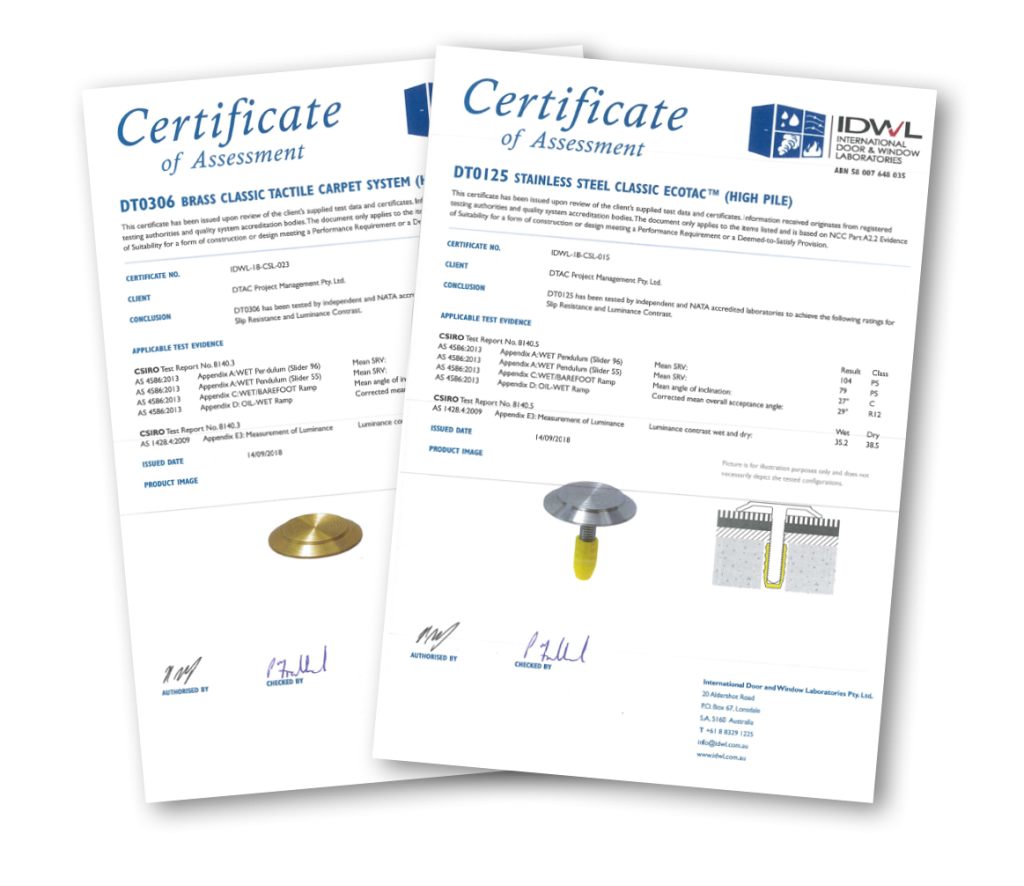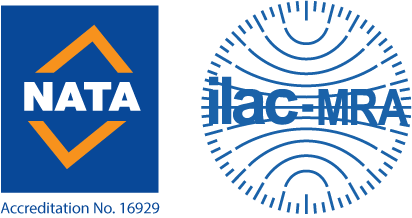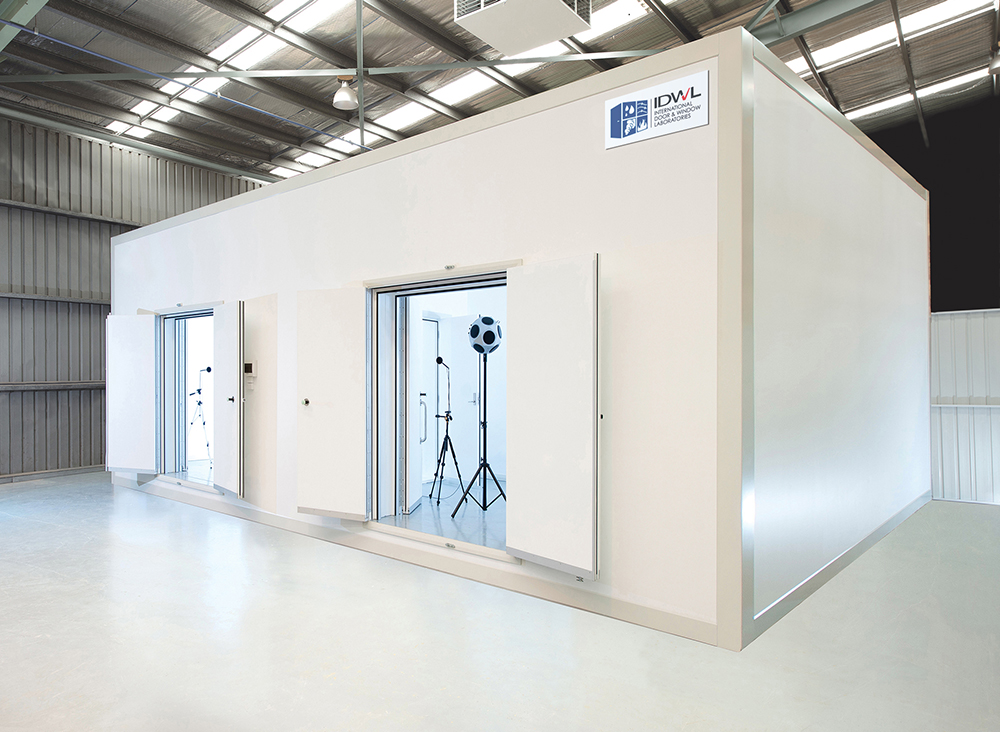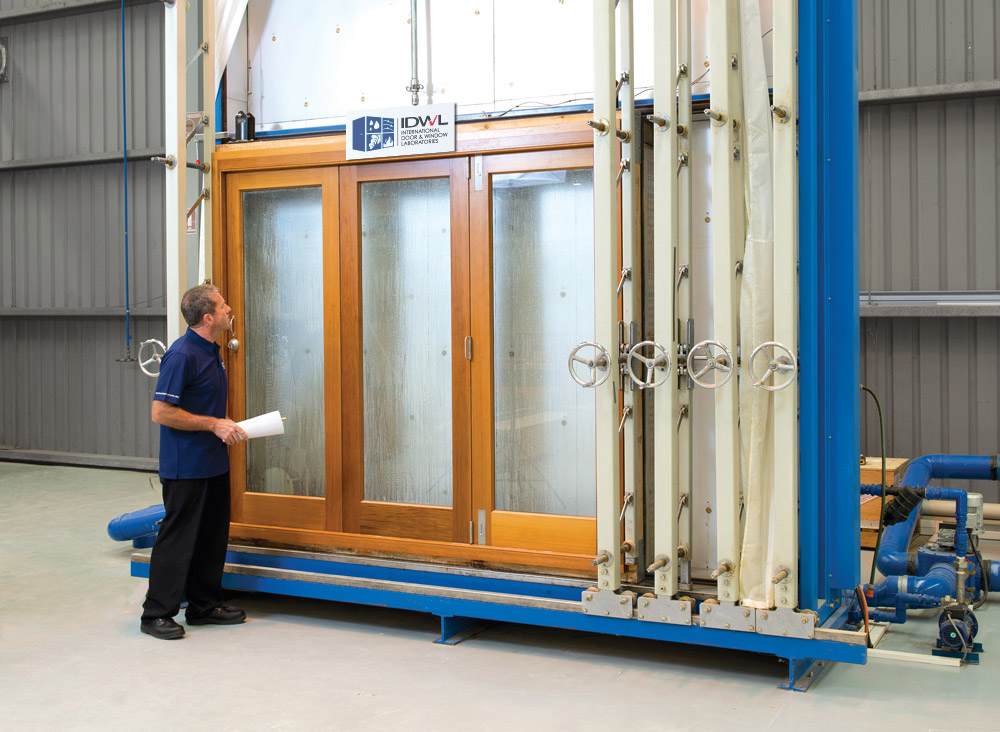Our NATA accredited luminance testing facility utilises a high-quality Konica Minolta CR-400 tristimulus colorimeter to conduct precise evaluations according to Australian standards AS 1428.1 and AS/NZS 1428.4.1, ensuring compliance and safety in built environments.
The NCC requires pedestrian routes to have sufficient reflective contrast for the visually impaired to be able to easily navigate public entry and egress routes in buildings. This requires surfaces to have the luminance reflectance measured to determine the surface luminance reflective value (LRV). These measurements are then used to determine the visual contrast suitability and compliance for the application.
But what exactly is luminance contrast? It measures the difference between black or white appearance (luminance reflectance) of adjacent colours using a colour meter. This is crucial for Tactile Ground Surface Indicators (TGSI’s) as per AS/NZS 1428.4.1, where the degree of contrast varies depending on the TGSI type.
At IDWL, our testing procedures adhere to the highest standards, ensuring accurate and reliable results. We employ rigorous testing methodologies, including assessments in both wet and dry conditions, to account for variations in luminance reflectance. This is particularly important for water-absorbing materials, as their reflectance can change significantly when wet.

Luminance reflectance testing can be conducted to the following standards
- AS 1428.1 Design for access and mobility – Part 1: General requirements for access–New building work – Appendix B.3.3.
- AS/NZS 1428.4.1 Design for access and mobility – Part 4.1: Means to assist the orientation of people with vision impairment – Tactile ground surface indicators – Appendix E3.







